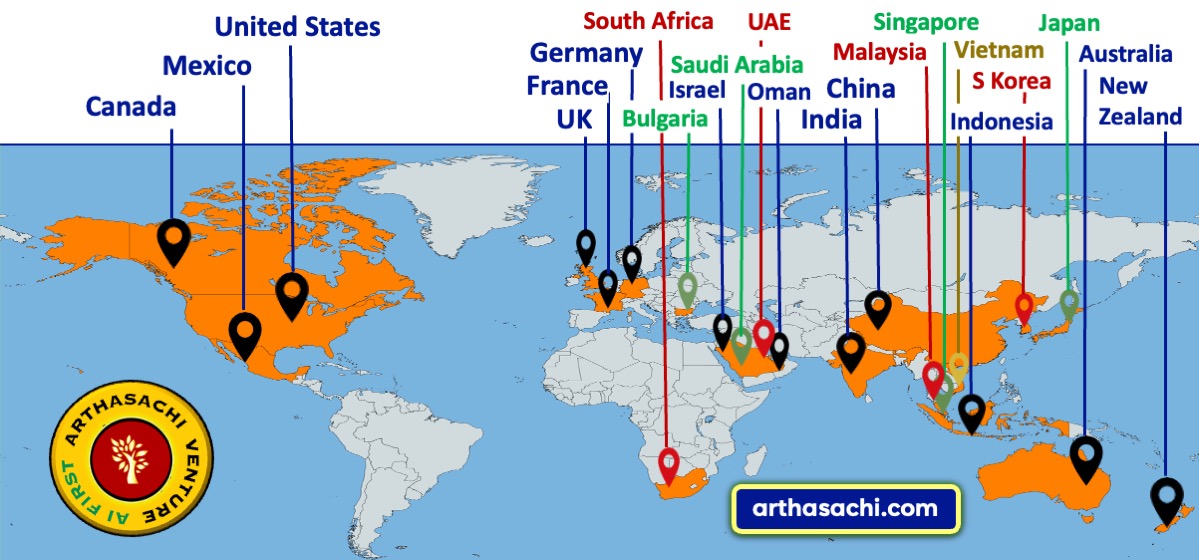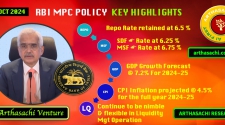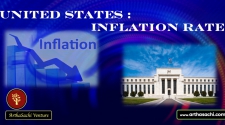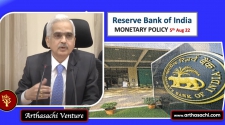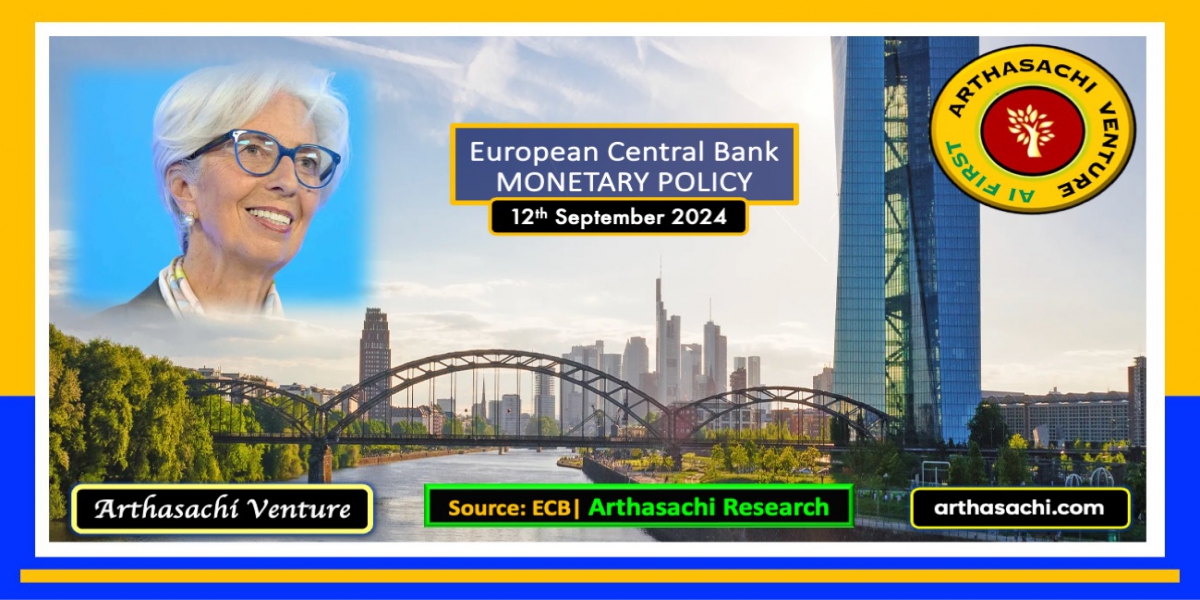
European Central Bank cuts rates by 25 basis points as growth risks rise
The European Central Bank remains focused on curbing inflation to meet its medium-term target, adjusting rates to ensure stability, while responding to challenges in the economy, including subdued growth and persistently high domestic inflation.
KEY TAKEAWAYS
- Lower the deposit facility rate by 25 basis points (bps), bringing it to 3.50% second successive cut this year.
- The economic outlook for the eurozone remains cautious. The economy will grow at a modest pace, with GDP expected to rise by 0.8% in 2024, followed by increases of 1.3% in 2025 and 1.5% in 2026. These estimates reflect a slight downward revision compared to earlier projections
- Inflation remains a primary concern for the ECB. The ECB's projections still foresee headline inflation averaging 2.5% in 2024, 2.2% in 2025, and reaching the ECB’s target of 1.9% in 2026.
- The Governing Council reaffirmed that interest rate decisions will continue to be data-dependent and determined on a meeting-by-meeting basis ECB to ensure that Inflation stabilises at 2% target over the medium term.
- The interest rates on the main refinancing operations and the marginal lending facility were also reduced to 3.65% and 3.90%, respectively.
European Central Bank President Christine Lagarde in its Monetary Policy press conference when asked about prospects for another rate cut in October, “repeated that policy makers remained “data dependent” and that the ECB’s path was not “pre-determined at all.” The decision to cut the deposit rate by a quarter of a percentage point Thursday was unanimous, she added.
Interest Rates
One of the primary decisions from the ECB meeting was to lower the deposit facility rate by 25 basis points (bps), bringing it to 3.50%, effective from September 18, 2024. The interest rates on the main refinancing operations and the marginal lending facility were also reduced to 3.65% and 3.90%, respectively.
The ECB made this decision based on updated assessments of inflation and the strength of monetary policy transmission, noting that inflation dynamics remained in line with earlier expectations, but wage growth and services inflation had been slightly higher than projected.
Additionally, the Governing Council reaffirmed that interest rate decisions will continue to be data-dependent and determined on a meeting-by-meeting basis, without pre-committing to a specific rate path. This emphasizes the ECB's flexible approach to managing the monetary landscape and achieving its inflation targets.
Inflation
Inflation remains a primary concern for the ECB. According to Eurostat’s flash estimate, annual inflation dropped to 2.2% in August, from 2.6% in July, 2024. While recent inflation data aligned with expectations, the ECB's projections still foresee headline inflation averaging 2.5% in 2024, 2.2% in 2025, and reaching the ECB’s target of 1.9% in 2026. The ECB also highlighted the expected increase in inflation towards the end of 2024, due to the fading impact of sharp falls in energy prices.
Core inflation, which strips out volatile components such as energy and food, has been revised slightly higher for 2024 and 2025, primarily due to persistent inflation in services. However, the ECB staff remains optimistic about a rapid decline in core inflation, which is projected to decrease from 2.9% in 2024 to 2.0% by 2026.
Although wage growth and high domestic inflation are driving some price pressures, labour cost pressures are moderating, and the ECB expects that profits will continue to absorb some of the impact of wage increases.
GDP (Growth Outlook)
The economic outlook for the eurozone remains cautious. The ECB staff projections suggest that the economy will grow at a modest pace, with GDP expected to rise by 0.8% in 2024, followed by increases of 1.3% in 2025 and 1.5% in 2026. These estimates reflect a slight downward revision compared to earlier projections, largely due to weaker domestic demand.
Economic activity in the region continues to be hampered by weak private consumption and reduced business and housing investment, despite some positive contributions from government spending and net exports. While the ECB expects a gradual recovery, the growth rate remains subdued, with limited signs of a significant upturn in the near term.
Economic Environment
The broader eurozone economy remains fragile, with financing conditions still restrictive. Economic activity is hindered by weak private consumption, limited investment, and a decline in household spending. Despite the resilience of the labour market, with an unemployment rate of 6.4% as of July, the ECB projects that employment growth will continue to slow.
The ECB remains focused on ensuring inflation returns to its 2% medium-term target and will maintain restrictive policies until this objective is achieved. The ECB also emphasized that its monetary decisions will be guided by ongoing assessments of the inflation outlook, economic developments, and the strength of monetary policy transmission.
Other Points of Focus
-
Asset Purchase Programs (APP and PEPP)
The ECB continues its measured reduction of asset purchases under the Asset Purchase Programme (APP) and the Pandemic Emergency Purchase Programme (PEPP). The ECB confirmed that it will cease reinvesting maturing securities from the PEPP portfolio by the end of 2024, signaling a further withdrawal of pandemic-era stimulus.
-
Risk Factors
The ECB also identified several downside risks to economic growth, including lower demand for euro area exports due to potential global slowdowns or escalating geopolitical tensions. Meanwhile, upside risks to inflation were noted, particularly from wage increases or rising energy prices due to heightened geopolitical tensions.
Conclusion
The ECB’s latest monetary policy decisions reflect a continued commitment to curbing inflation while navigating a challenging economic environment marked by sluggish growth and persistent inflationary pressures. With modest rate cuts and a data-driven approach to future policy, the ECB aims to stabilize inflation and support gradual economic recovery across the eurozone. However, risks to both growth and inflation remain significant, necessitating careful monitoring and potential adjustments in future meetings.
Top News
Other News
MARKETS
WEALTH
ECONOMICS
START UP
TECHNOLOGY
BUSINESS
Alliances and Partners

Arthasachi Venture Footprints
